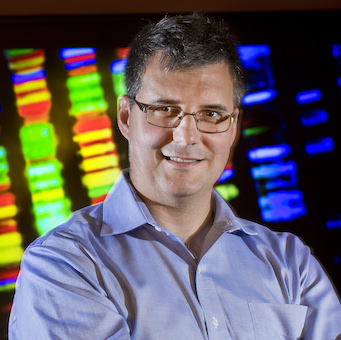Director's Message to UMIACS
After reviewing the current issue of UMIACS Interface, I have a tremendous sense of pride in the work we do and in the people I interact with in our institute.
The articles and video content offered this month make very clear the scope and impact of our research. What’s striking is how all of the stories represent a forward-looking approach to science and innovation.
Think Big. Be Bold. Work Hard. These are all valued principles that we strongly encourage in UMIACS. We’re also committed to taking on the biggest scientific and societal challenges, even if a solution is years away.
The induction of Ben Shneiderman and Amitabh Varshney into the IEEE Vis Academy exemplifies this idea. Ben, as many of you are aware, is a pioneer in the field of human-computer interaction, particularly as it relates to the visualization of large amounts of data. Amitabh’s work in visualization will also have a lasting impact—most notably his latest research involving immersive technologies used for emergency medicine.
Both Ben and Amitabh had a bold vision that they pursued with vigor. Ben did some of the earliest work on the what is now an essential part of electronic communications and data accessibility—the hyperlink. Amitabh’s vision was to build new tools based in virtual and augmented reality that can assist physicians in lifesaving critical-care procedures.
In both these cases, what at first seemed distant, difficult research problems would blossom into new tools, protocols and technologies that have the capacity to greatly improve our lives.
The same can be said for the research of Rita Colwell, who is featured in an insightful Q&A regarding global water issues. Rita was the first scientist to write a computer program that could identify bacteria, and her groundbreaking use of computational tools to study biology helped establish the field of Bioinformatics, a key area of scientific study today.
The newsletter also features innovative research by our new faculty. Furong Huang, a core member of our Center for Machine Learning, is using classical machine learning algorithms to understand modern deep neural networks. Her work could be vital in improving the safety of autonomous vehicles. Pratap Tokekar, who joined UMIACS in September, is exploring new uses for robots in environmental monitoring, precision agriculture, and infrastructure inspections.
And make sure to check out the article on research by faculty and students in the Human-Computer Interaction Lab, jointly supported by UMIACS and the iSchool. HCIL members presented eight papers this year at IEEE VIS 2019. Quite impressive.
There are also two stories that highlight work being done in our Joint Center for Quantum Information and Computer Science (QuICS), a unique partnership between the university and the federal government. Researchers in QuICS are advancing discoveries in quantum computing and quantum information science—scientific topics that remain elusive and challenging.
That hasn’t stopped us before, and I don’t expect it to stop us now. It's interesting that QuICS researchers are currently developing software and conceptualizing cybersecurity protocols for quantum systems that haven’t even been built yet.
Amazing. Yet typical of the work we do in UMIACS.
Come and see me if you have an idea or project that is bold and forward-looking. UMIACS is committed to providing support for these types of endeavors.
Let’s work together to change the future.
Mihai Pop, UMIACS Director

